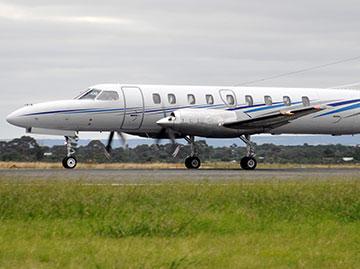
Effective use of Crew Resource Management procedures by a Fairchild SA227 flight crew helped them safely deliver 13 passengers from Armidale, NSW, to Brisbane, Queensland, after a mid-flight engine failure.
At 7.55 am on 12 October 2016, the aircraft was about 170 km south of Brisbane when it suddenly yawed to the right.
The flight crew noted that all right engine indications were normal except for a low torque reading and low fuel flow. They confirmed that the right engine was not delivering power, shut it down and feathered the right propeller.
Air traffic control gave them a direct track to Brisbane Airport. After completing their normal and single engine landing checklist, the Fairchild landed at Brisbane Airport runway 19 without further incident.
Australian Transport Safety Bureau Chief Commissioner Greg Hood says that, following the aircraft yaw, the flight crew actively employed their crew resource management procedures to identify and confirm the engine fault and shut it down.
“The use of these procedures reduced the risk of an incorrect diagnosis of the fault, or activation of the incorrect engine controls during shut down,” Mr Hood said.
The ATSB investigation found that the failure of a retainer ring that led to an engine gearbox malfunction, was within the required gearbox inspection intervals and without prior warning of an impending failure.
As a result of this occurrence and subsequent to an update by the engine manufacturer to the engine manufacturer’s service bulletin, the aircraft operator has advised the ATSB that they have reduced their engine oil testing interval from 150 hours to 100 hours.
Retainer ring

Read the report: Engine failure involving Fairchild SA227, VH-VEU, 170 km south of Brisbane, Queensland, on 12 October 2016


